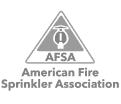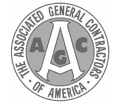Do Fire Extinguishers Expire?
This is a question that we get all the time. And it’s an important question—if you’ve had your fire extinguisher for a few years (think five or more), you might be thinking it’s time for fire extinguisher replacement. Well the good news is, fire extinguishers of any kind (dry chemical, wet chemical, etc.), don’t typically expire. They may occasionally need recharging, however, especially after you discharge them.
How can I tell if I need to recharge my fire extinguisher?
The only way to really tell if you need fire extinguisher recharge is by having your fire extinguisher inspected—by yourself once a month, and annually by a professional fire extinguisher inspection company like Kauffman Co., who will place month and year inspection tags on the extinguisher. We’ve written in the past about performing monthly fire extinguisher inspections, but the most important thing to do is make sure the needle on the pressure gauge is in the green zone—this means your fire extinguisher is fully charged and will be ready when you need it. If it’s in the red, call your fire protection company as soon as possible.
Is it better to replace or recharge a fire extinguisher?
Many things can go wrong with fire extinguishers that might require you to recharge or replace them. Ask Kauffman Co. to come take a look if you notice any of these problems during a routine monthly fire extinguisher inspection:
- Cracked or otherwise damaged shell
- Cracked, ripped, or clogged hose or nozzle
- Missing or unsealed pin
- Broken or wobbly handle
- Low pressure indication
- Missing inspection tag
We’ll recommend servicing and recharging the extinguisher if doing so would be economical and equally as effective as replacing the unit. On the other hand, if the canister is damaged beyond repair, we’ll assist you with replacing your fire extinguisher.
HOW LONG DO FIRE EXTINGUISHERS LAST?
All fire extinguishers should last a minimum of five to 12 years. It’s at these intervals that extinguishers are hydrostatically tested, depending on the type you have. Hydrostatic testing is when the cylinder is emptied, filled with colored water, and brought up to a high pressure for a brief time. The shell, hose, and nozzle must withstand this pressure to pass the test.
Is there anything else I need to do with my fire extinguisher?
In addition to having your extinguisher inspected annually, you should have it hydrotested every 12 years. A fire extinguisher hydrotest is the best way to check for any cracks or degradation of the fire extinguisher shell and will help you tell whether your old fire extinguishers are up to the task.
Fire extinguishers are some of the most important things you can have in your building to keep it safe from fires. But in order for your fire extinguishers to keep you safe, it’s your responsibility to keep them well maintained! For all your fire extinguisher needs in Houston, Texas, call Kauffman Co. today. Our fire protection technicians have decades of combined experience and will make it easy to keep you safe at all times.
HOW TO DISPOSE OF A FIRE EXTINGUISHER THAT’S NOT EMPTY
Since full or partially full fire extinguishers contain materials that could be environmentally hazardous, it’s important that you take them to a facility that can process them. When you dispose of your fire extinguisher, squeeze the trigger and let a little bit of extinguishing agent out (the goal here is not to empty the fire extinguisher slowly, but instead to let the pressure out). Wait until the needle on the pressure gauge falls to zero (this could take a few hours to a few days), then take it to a hazardous waste center. They should be able to recycle both the extinguishant and the shell.
HOW TO DISPOSE OF A FIRE EXTINGUISHER THAT IS EMPTY
Disposing of an empty fire extinguisher is a little bit easier than disposing of a full one. The first thing you should do is squeeze the handle to make sure as much of the extinguishing agent as possible gets discharged. Next, remove the head from your fire extinguisher – this will let anyone who sees it know that it has been fully discharged. Finally, recycle the steel fire extinguisher shell – most community recycling centers should accept it.
If you need fire extinguisher inspection, replacement or recharge, click here or call Kauffman Co. today!















